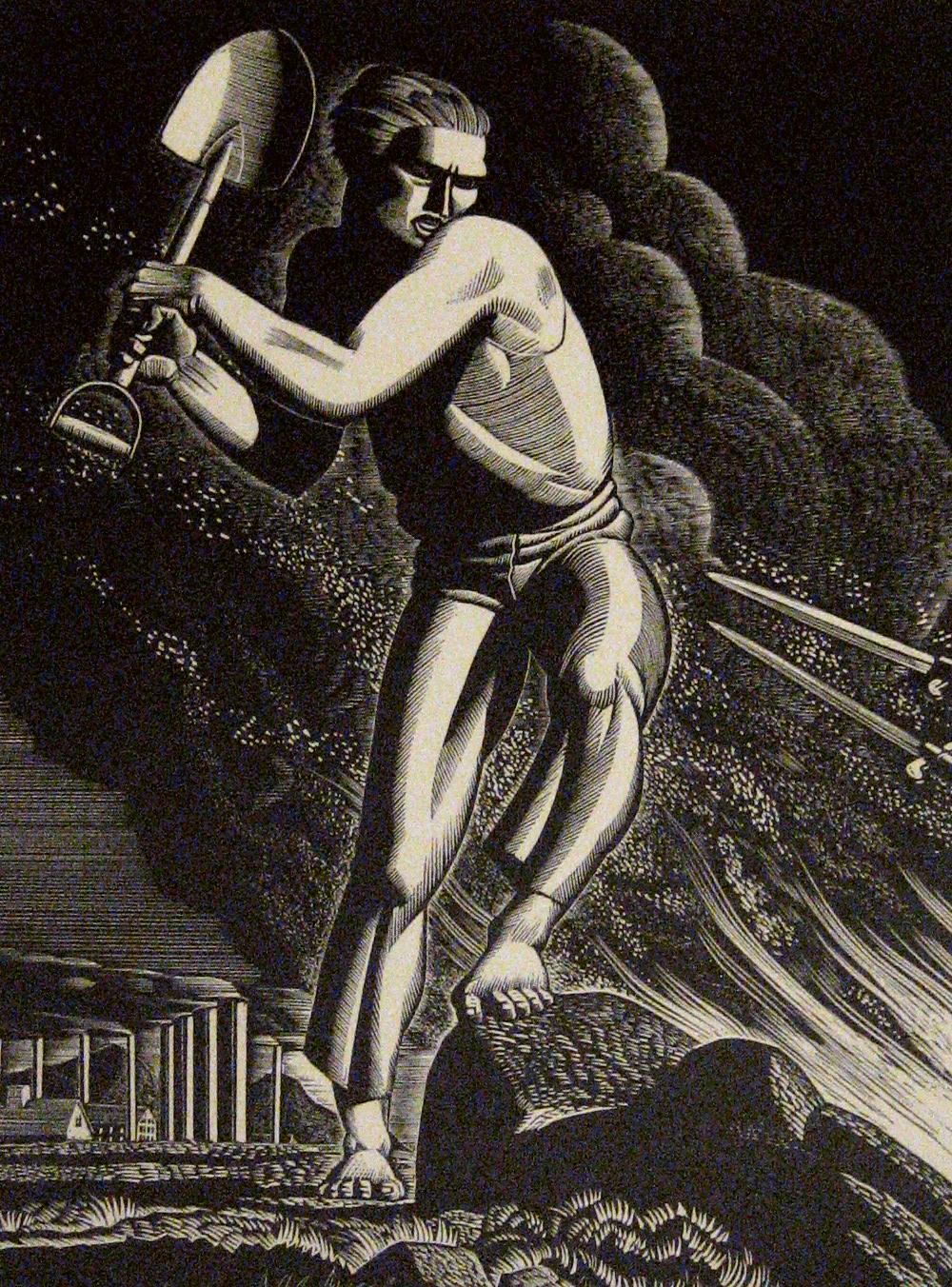"...in the 1930s, he reached his greatest popularity. In 1936, the magazine Prints conducted an extensive and elaborate survey on the practitioners of graphic art in the United States. Kent came out far ahead of all others as the most widely known and successful printmaker in the country."
But his consistent support of radical causes lead to a decline in his popularity during the 40s and 50s. Kent became very popular in Soviet Russia and almost half of a million Russian attended an exhibit of his work. In 1967 he was awarded the Lenin peace prize, which was mainly awarded to prominent Communists and supporters of the Soviet Union who were not Soviet citizens. Unfortunately at this point much of his work was denounced due to political reasons despite its quality. It is crazy to think that just this afternoon I was standing in his studio in the Adirondacks and that I could hold the same tools he used to craft his work. After witnessing the stunning views from the property it is no surprise he drew upon it so heavily. I am very curious to explore how other artists and intellectuals were inspired by the park and thankfully will have a formal opportunity to do so with my presentation on the Philosophers' Camp.
Here is a relatively thorough Bio of Kent from SUNY Plattsburgh: http://clubs.plattsburgh.edu/museum/rk_bio.htm
 |
| One of Kent's Illustrations from Moby Dick (1930) |

I always use the edition of his work that uses his illustrations (The Modern Library edition) when I teach "Moby Dick." I've always loved these illustrations, even before I came to learn that he was an Adirondacker. Much of his work reminds of the illustrations of William Blake, who was also a radical renaissance man.
ReplyDelete